“I Don’t Design Clothes, I design dreams.” – Ralph Lauren.
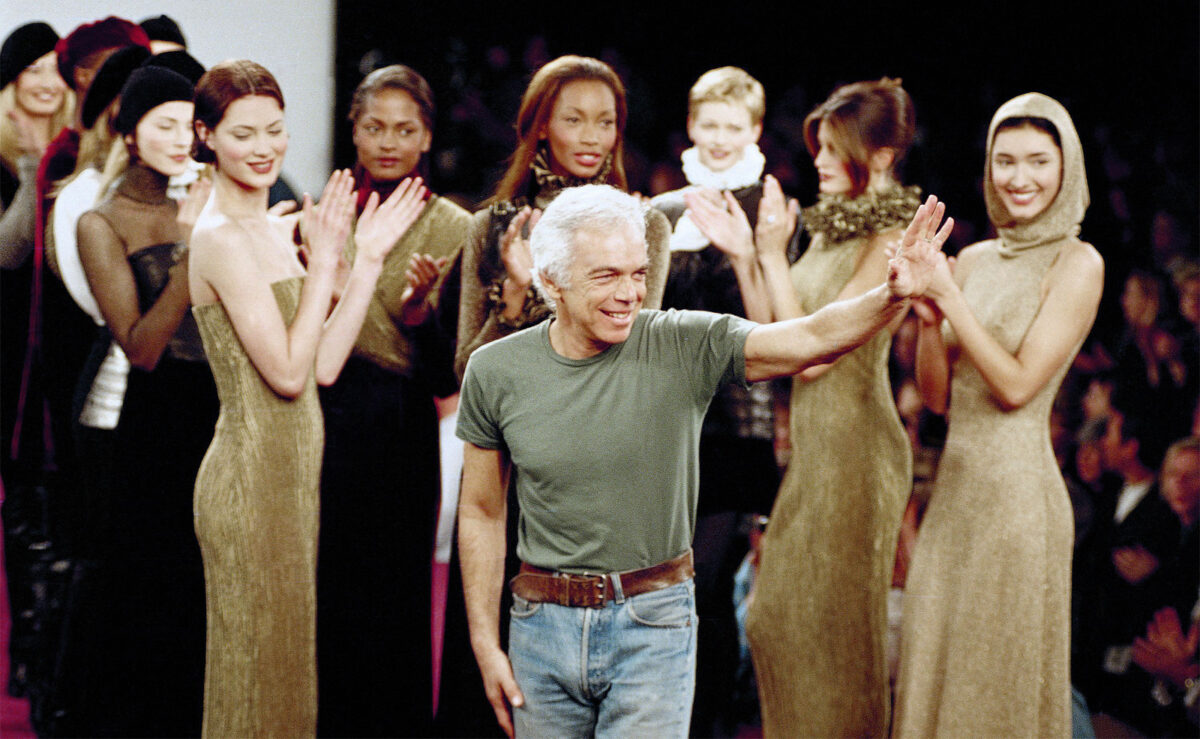
“Fashion is very transient. It is trends that come and go. For me, it’s about timelessness and about style. A sort of non-fashion statement that’s very stylish. That’s what I’m about,” said Ralph Lauren
Ralph Lauren was born Ralph Lifshitz in 1939 in the Bronx, New York City. He first started designing flamboyant wide expensive handmade ties in New York City over forty years ago. Ralph Lauren always had a vision and an understanding for an insouciant yet effortlessly elegant and unique American style. He was the pioneer of merging classic American style with the refinement, tailoring, and sensibility of European fashion. He never attended fashion school, instead he followed his instincts and his good sense of style.
In 1968, a young designer started his business out of a tiny showroom in the Empire State Building. Over the next 50 years, his brand would come to define not just the male American wardrobe, but the fundamental ways we understand style and 360 degree luxury lifestyle.
By 1969, the ambitious young designer established his first designer boutique for men in Bloomingdale’s and gave style-starved American men a British bent in Oxford button-down shirts, chinos, tweed jackets, denim, chambray shirts, and chic cashmere overcoats.

A year later, he won his first Coty Award for menswear. By 1972, he created an instant American classic with the Polo mesh shirt complete with the ubiquitous polo logo, and he began designing tailored shirts for his new womenswear range.
Ralph Lauren channelled references from film, music, sport, media and culture into a single, coherent language, creating a sartorial style that would come to define the very notion of elite academia. The Ralph Lauren style has always been entrenched in the iconic status of the Polo lifestyle and the preppy Ivy League style of New England.
One of Ralph’s many talents was his instinctive mastery of brand imagery, and for a designer who claimed that he designed dreams, this talent was to prove a powerful weapon in the Ralph Lauren creative arsenal. In the late 1970’s Ralph would come to commission rising photographer Bruce Weber to help create his various campaigns. This partnership would go on to be one of the most influential and enduring partnerships in fashion. Weber was no less instrumental for many of the most famous Calvin Klein and also Abercrombie and Fitch campaigns.
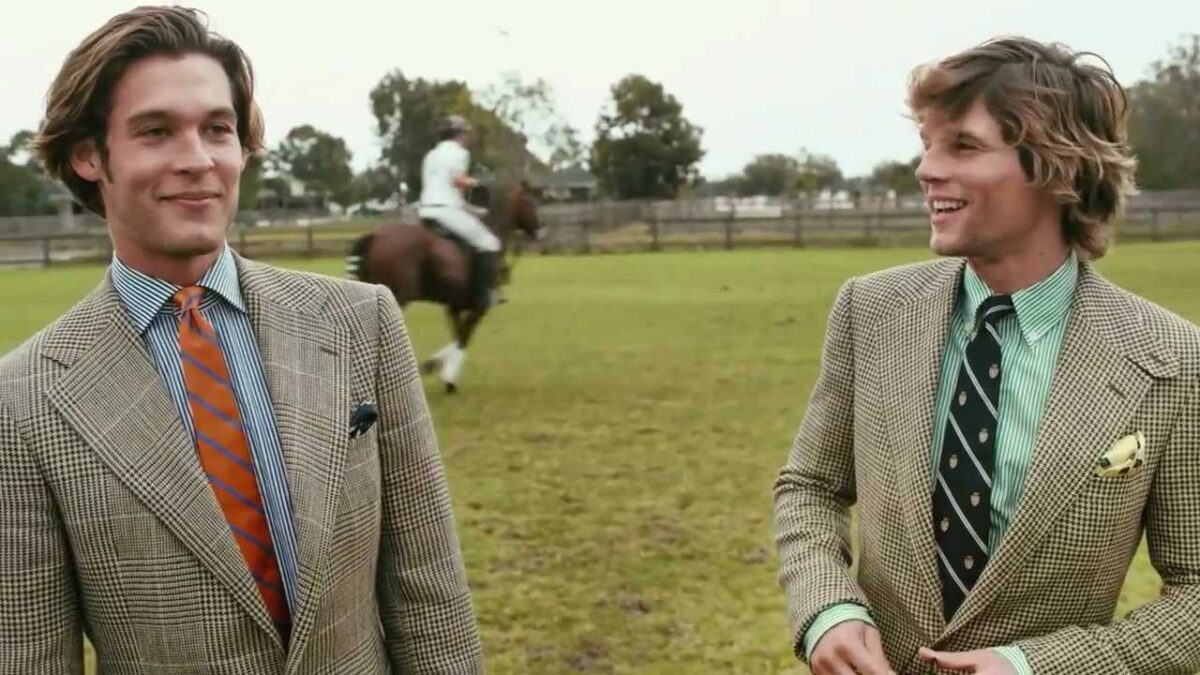
Contributing to a major revival in the 1970s of 1920s casual grandeur, Ralph Lauren designed the wardrobe for the entire male cast of the movie The Great Gatsby. Three-piece men’s suits, sweaters, and the legendary pink suit worn by Robert Redford as the wealthy and mysterious Jay Gatsby were pure fashion synchronicity for the times and the Ralph Lauren style.
In the late 1970s and early 1980s, embracing the romance of the American West and with his intrinsic sense of polish, Ralph Lauren layered women in denim, white petticoats, and buckskin fringed jackets known as the “prairie look”, as well as hooded capes and madras shirts also known as the “frontier look”.
In 1978 the first Ralph Lauren fragrances were realised. Lauren was released in March 1978, a fragrance for women. Polo was released in March, a cologne for men. This was the first time that a designer has introduced two fragrances – one for men and one for women – simultaneously.
The ever-popular Santa Fe Collection saw the use of colours and patterns of the Navajo Indians. Jay Gatsby’s New England world morphed into the frontier West of the Marlboro man. The Polo Ralph Lauren brand catapulted further into American consciousness with his pioneering style of advertising, mostly shot by famous lensman Bruce Weber.
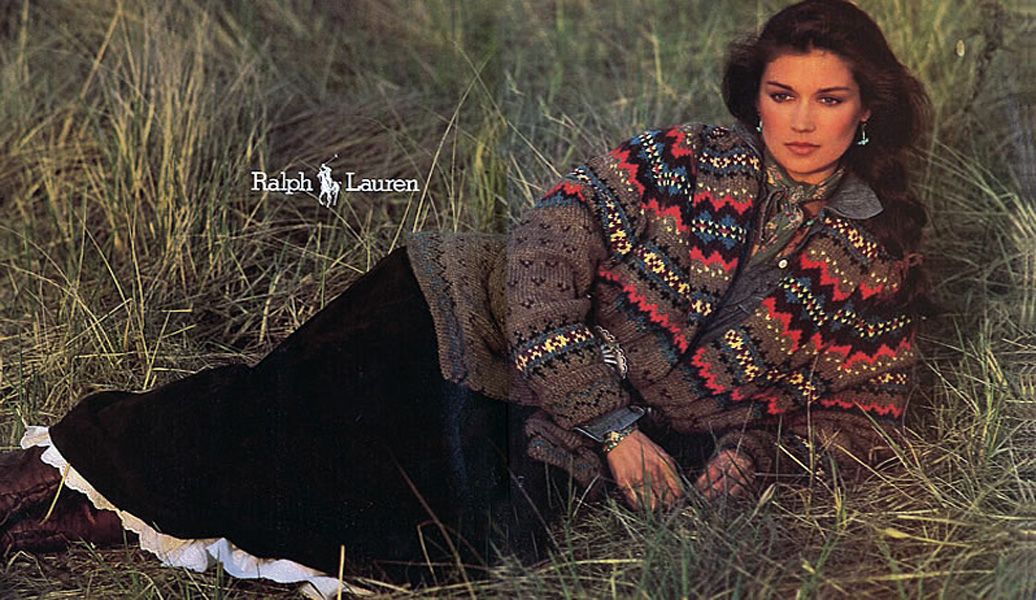
The images were like sweeping colour stills from fantastic film sets and often using non-models in real settings like square-jawed surfer Buzzy Kerbox and architect Tom Moore, and more recently even a famous Argentine Polo star Nacho Figueras. These magazine ads and seasonal catalogues celebrated the entire spectrum of themes from the American and Global lifestyle experience.
In 1983, as an homage to his trailblazing lush retail store environments, he was the first fashion designer to launch an entire home collection combining all the elements the designer is known for—product innovation, colour, exquisite detailing, and a new and exciting lifestyle approach to home products.
He raised the bar for retail experience by creating his flagship store in 1986 in the famous one-hundred-year-old Rhinelander Mansion on Madison Avenue, recreating the opulence of the original neglected mansion and transforming the cinematic feel of his clothing and advertising into a real environment. Today, Ralph Lauren has flagship stores from Tokyo to Moscow, from Milan to Shanghai, and dozens and dozens more.

In the 1990s, to coincide with the Atlanta Olympics, Ralph Lauren created yet another new world: Polo Sport. Recognising the massive global trend for health and fitness, Lauren was quick off the mark and ahead of his game in stylish leaps and bounds.
Polo Sport became the official outfitter of the American team for the America’s Cup, and who could forget the stellar outfits Polo Ralph Lauren designed for the U.S. Olympic and Paralympic teams for the 2008 Beijing Summer Olympic Games?
In 2004, Ralph Lauren launched Rugby, a full lifestyle collection designed for men and women aged sixteen to twenty-five. These include iconic Rubgy shirts, polos, jackets, suits, dresses, and accessories that are fashion-forward but steeped in the signature preppy style.
In spring 2020 the brand is expanded its Earth Polo shirt offering with a larger capsule consisting of new colours and designs. Following Polo Ralph Lauren’s commitment to protecting the environment by using 170 million plastic bottles in its product and packaging by 2025. The Earth Polo was designed with Mother Nature in mind, is crafted from thread derived entirely from recycled plastic bottles and dyed in an innovative process that uses zero water. Each Earth Polo is made from an average of 12 plastic bottles.

In 2020, the brand continues to build upon its 30-year history of supporting and advancing LGBTQIA+ issues through volunteer activations, corporate initiatives and financial grants. Ralph Lauren celebrated Pride month by launching a digital marketing campaign and a ten-piece gender-neutral Polo Pride 2020 collection for adults and children.
The dynamic digital marketing campaign showcased stories of inclusion, freedom, equality and self-love. Featuring a diverse group of individuals including actor, model, and activist Indya Moore; writer, producer and actor Dan Levy; singer and actor Jeremy Pope; illustrator Richard Haines and artist Deep Pool; models Erika Linder and Heather Kemesky; author Sarah M. Broom; soccer player and producer Robbie Rogers; chef Kristen Kish; US army veteran Anthony Woods; TikTok duo Ebony and Denise from Team2Moms; as well as photographers Micaiah Carter, Soraya Zaman, and Cass Bird with her family.
Since its release over 25 years ago, the Stadium Collection has been heralded by both Ralph Lauren lovers and OG streetwear heads as a high point of design, style and pure aesthetics from the label. The use of large logo and graphic placements, bold colour blocking patterns and top-to-toe coordinated outfits fit perfectly with the sneaker and streetwear phenomenons emerging on the east and west coasts of America and many of the collection’s fundamentals have endured, influencing the work of countless other designers well into the 21st century.
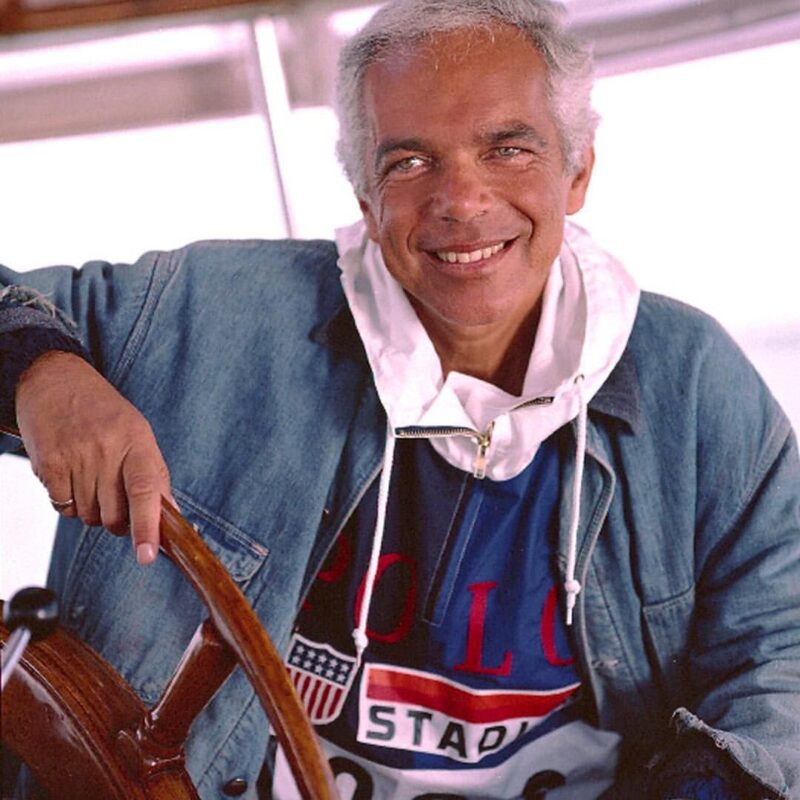
Fashion lines that blend high fashion, sportswear, outdoors apparel and streetwear might be a dime a dozen these days, but when you consider this is a collection that released before sneaker culture had even made it out of the States, and before the world’s most iconic streetwear brands had even opened their doors, the importance of the ‘92 Stadium collection becomes all the clearer. When the Lo-Lifes say Ralph Lauren is a lifestyle, they’re not just talking about themselves. The legacy runs through the fabric of the culture itself.
In a special episode of The Dropcast with Jian DeLeon, Noah Thomas and Corey Stokes. They sat down with notorious Polo collector Ezra Wine to discuss the cultural significance of Ralph Lauren and Ezra’s “Lo and Behold” exhibition with Public School NY, possibly the largest and most definitive exhibition of vintage Polo to ever be shown to the public.
“POLO HAS JUST INFLUENCED EVERYBODY. THEY’VE BEEN COPYING POLO FOR 20 YEARS.” – Ezra Wine
He has won every major fashion award presented by the Council of Fashion Designers of America’s (CFDA), including the Lifetime Achievement Award, the Womenswear Designer of the Year Award, Menswear Designer of the Year Award, Retailer of the Year, and the first-ever Popular Vote Award.
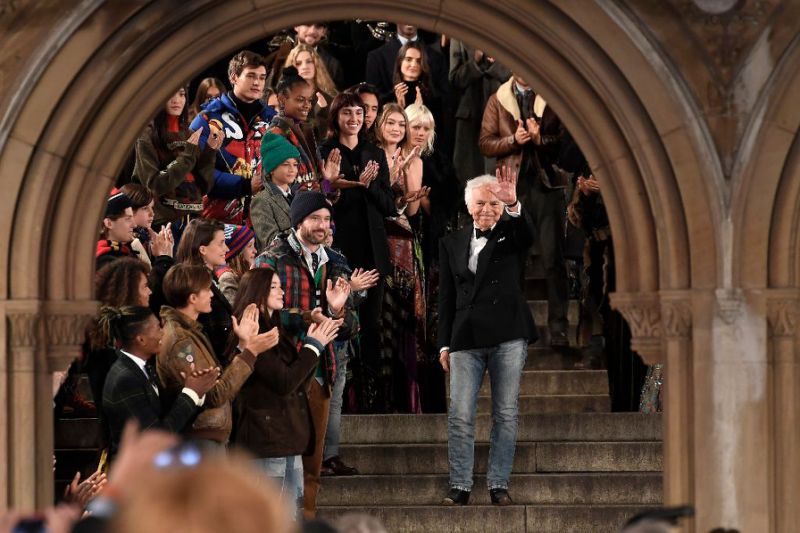
Ralph Lauren has been shaping the way we perceive and create menswear for the last 50 years, helping to establish the foundations of fashion and streetwear that we’ve come to know and love. It’s a brand that’s revered by young and old, designers and consumers, die-hards and casuals.
His long list of philanthropic activities is impressive and soulfully regarded. Including the 1989 establishment of the Nina Hyde Centre for Breast Cancer Research at Georgetown University Hospital in Washington D.C.
In 1994 alongside the CFDA, he created the international awareness campaign Fashion Targets Breast Cancer.
The establishment of the American Heroes Fund following the September 11th attacks, allowing Polo’s 10,000 employees worldwide as well as their customers the opportunity to participate in the relief effort.
The Polo Fashion School was established in 2004, in which Company executives work with inner-city youth to offer insights into the fashion business.
Established in 2006, the Polo Jeans G.I.V.E. (Get Involved, Volunteer, Exceed) campaign was created to inspire and encourage community service through volunteerism by supporting the efforts of dedicated volunteers and their causes.
In 2014, the Ralph Lauren Corporation partnered with the Royal Marsden, the largest and most comprehensive cancer centre in Europe, to develop a world-class breast cancer research facility. They opened the Royal Marsden Ralph Lauren Centre for Breast Cancer Research in 2016.

“I hate when people call me philanthropic because I see it as more coming from the heart,” said Ralph Lauren.
Ralph Lauren (born Lipschitz) is a living legend, a true American fashion icon, and is worth US$ 5.7 billion (according to 2020 Forbes).
Ralph Lauren’s impact extends beyond garments. What started out as a fashion brand has gone on to influence interior designers, musicians, inspire cultures, and mould identities that could never have existed without the brand’s truly innovative approach to 360 degree style. Ralph Lauren is not just a fashion brand, it’s a fully immersive lifestyle.
And, over the years, it’s built a symbiotic relationship with its followers whose experiences have become as much a part of the brand’s story as it has theirs. It’s impossible to tell what the fashion industry will look like in five years, let alone another 50. But one thing is for certain: Ralph Lauren will forever be a guiding light.

Discover more of Ralph Lauren’s life story in Fashion Industry Broadcast’s Masters of Fashion Vol. 31 “Americans”. Available via Amazon – worldwide!
Subscribe to FIB’s Weekly Alchemy Report for your weekly dose of music, fashion and pop culture news!







